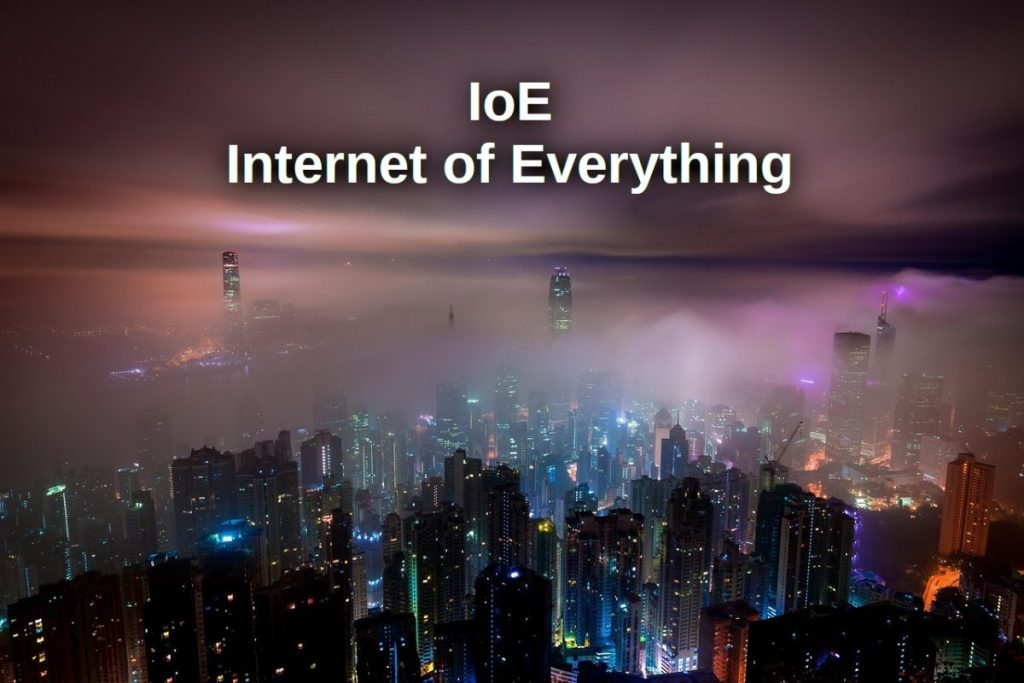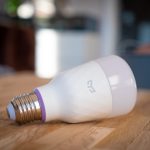The world is becoming more connected every day, and terms like Internet of Things (IoT) and Internet of Everything (IoE) are becoming more common. While IoT is already transforming industries and everyday life, IoE takes connectivity a step further, integrating not just devices but people, processes, and data into a fully interconnected digital ecosystem.
But what exactly is IoE, and how does it relate to IoT? Is it just a buzzword, or does it represent the future of smart technology? In this article, we’ll break down:
✅ What IoE is and how it works
✅ The key differences between IoE and IoT
✅ Real-world applications of IoE
✅ The benefits and challenges of an IoE-driven world
What is the Internet of Everything (IoE)?
The Internet of Everything (IoE) is a concept introduced by Cisco, which expands on IoT by connecting not just physical devices but also people, data, and processes in a more intelligent and automated way.
The Four Pillars of IoE
IoE is built on four key components that work together to create a fully connected environment:
1️⃣ People – Individuals using connected devices, wearables, and online services to interact in real time.
2️⃣ Things – Smart devices, sensors, and IoT-enabled machines collecting and sharing data.
3️⃣ Data – The massive amounts of information generated, processed, and analyzed to make intelligent decisions.
4️⃣ Processes – The automation and coordination of systems that turn raw data into meaningful actions.
In simple terms, IoE takes IoT beyond just connected “things” by integrating everything into a seamless, data-driven ecosystem.
IoT vs. IoE: What’s the Difference?
Many people confuse IoE with IoT, but while they are closely related, they are not the same. The easiest way to understand their difference is:
| Feature | IoT (Internet of Things) | IoE (Internet of Everything) |
|---|---|---|
| Definition | A network of connected devices and sensors. | A broader system that connects people, processes, data, and devices. |
| Scope | Focuses mainly on “things” (e.g., smart appliances, wearables). | Expands to include human interactions and automated decision-making. |
| Data Usage | Collects and transmits data but often requires manual analysis. | Uses AI, machine learning, and analytics to make automated decisions. |
| Example | A smart thermostat adjusting temperature based on user settings. | A smart city system adjusting traffic lights based on real-time congestion data. |
While IoT focuses on connecting devices, IoE integrates everything—making it more powerful, intelligent, and automated.
How IoE Works in the Real World
IoE is already transforming industries by integrating devices, data, and automation to improve efficiency and decision-making. Here are some real-world applications:
1. Smart Cities 🏙️
IoE helps cities become more efficient and livable by integrating connected systems, including:
✔ Smart traffic management (real-time traffic monitoring, automated signals)
✔ Connected energy grids (smart meters, automated power distribution)
✔ Public safety (AI-driven surveillance, emergency response coordination)
🔹 Example: Barcelona, Spain, has implemented smart parking sensors that guide drivers to available spots, reducing traffic congestion.
2. Healthcare & Telemedicine 🏥
IoE is revolutionizing healthcare by enabling:
✔ Wearable health monitors that track real-time vitals
✔ AI-powered diagnostics for faster disease detection
✔ Remote patient monitoring for improved elderly care
🔹 Example: Patients with heart conditions can wear a smart ECG patch that transmits data to doctors, allowing early intervention before emergencies happen.
3. Smart Homes & Workplaces 🏡🏢
IoE enhances daily life by automating home and office environments through:
✔ Voice-controlled assistants (Alexa, Google Assistant)
✔ Smart security systems (AI-powered cameras, smart locks)
✔ Energy-efficient lighting & appliances
🔹 Example: An IoE-enabled home can automatically adjust lighting, temperature, and security settings based on user behavior and environmental factors.
4. Industrial Automation (IIoT) 🏭
In industries, IoE enables predictive maintenance, robotics, and AI-powered automation, improving productivity and reducing downtime.
🔹 Example: Manufacturing plants use AI-driven sensors to predict when a machine needs maintenance, avoiding costly breakdowns.
The Benefits of IoE
IoE is making the world more connected, automated, and efficient. Some key benefits include:
✔ Enhanced Automation – Processes that once required human intervention can now run on their own, reducing errors and improving efficiency.
✔ Improved Decision-Making – AI and analytics provide real-time insights, helping businesses and cities make smarter choices.
✔ Increased Productivity – Automated systems streamline operations, reducing manual workload and boosting output.
✔ Better Resource Management – From reducing energy waste in smart buildings to optimizing supply chains, IoE leads to more sustainable solutions.
✔ Stronger Security & Safety – IoE-powered surveillance, cybersecurity, and predictive maintenance enhance both physical and digital security.
Challenges & Concerns of IoE
Despite its many advantages, IoE comes with challenges that need to be addressed:
🔸 Privacy & Data Security – With massive amounts of data being collected, there’s an increased risk of cyberattacks and unauthorized surveillance.
🔸 High Implementation Costs – Setting up an IoE ecosystem requires investment in infrastructure, AI, and automation.
🔸 Interoperability Issues – Many devices and platforms use different communication protocols, making seamless integration a challenge.
🔸 Job Displacement Concerns – As automation increases, there’s fear that many traditional jobs could be replaced.
Addressing these challenges will require stronger cybersecurity, better regulations, and global standardization of IoE technologies.
What’s Next? The Future of IoE
IoE is still in its early stages, but its potential is limitless. In the future, we can expect:
🚀 AI-driven Smart Cities – Cities that automatically manage traffic, waste, and energy usage in real time.
🚀 Fully Autonomous Industries – Factories and supply chains running on self-optimizing AI systems.
🚀 Hyper-Personalized Services – IoE-powered smart assistants that anticipate your needs before you even ask.
🚀 Quantum Computing in IoE – Super-fast, AI-powered decision-making for real-time data processing.
As 5G, AI, and edge computing continue to evolve, IoE will become even smarter, faster, and more integrated into everyday life.
Final Thoughts
The Internet of Everything (IoE) is more than just a buzzword—it’s the next evolution of connectivity, where not just devices but people, data, and processes work together in an intelligent, automated ecosystem.
While IoT connects things, IoE connects everything, unlocking new possibilities in smart cities, healthcare, industry, and everyday life.
As technology advances, IoE will continue to shape the future, bringing us closer to a world where automation, AI, and real-time data work seamlessly to improve the way we live and work.
🌎 Are we ready for a world where everything is connected? The future of IoE is just beginning! 🚀


